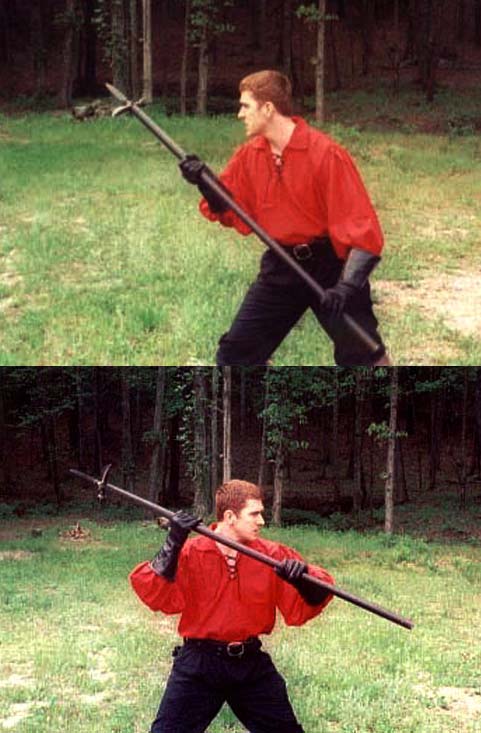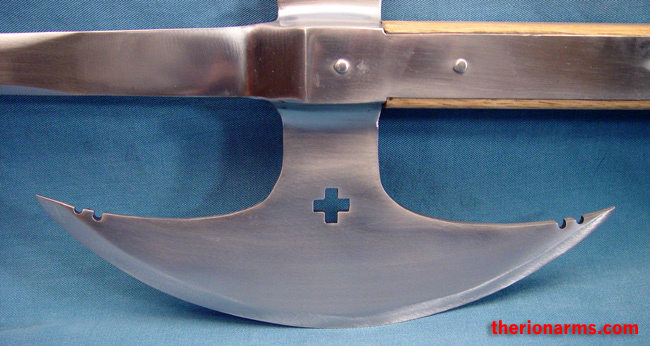Goodness, it looks so much like mine, doesn't it?


It's a remnant of an earlier age in the game's development, but such things DID exist -but as tools, not weapons, and with a tremendously shorter handle.
Now, as to poleaxes.
This is so simplistic that it descends to the point of fallacy and almost makes it back again, but "if you can do it, it was done." If you can hook something with it, it was used for hooking. But that's not why they
put it there.
The hook on a bill was definitely meant for pulling, tripping, binding, and generally taking **** you don't want taken. But that spine on the back was meant for piercing things you don't want pierced.
This fellow is an extreme example, but it's for armor piercing all the way. Personally I think it's made this way to be an aid in blocking/parrying. That's not to say you couldn't hook or pull with it -if it hooks, pull!- but that's definitely not what it's
made for.
Talhoffer had a great picture drawn of a disassembled poleaxe that clearly shows the intent of design.
As you can see, there are pokey-bits everywhere. If it touches something in any direction, even accidentally, it's supposed to hurt
-a lot.
This fellow is probably the best example of the "pain in every direction" principle, and it's illustrative. You can clearly see the part that's made specifically for hooking. You can also see, by the dimensions of the top spike, that it's awfully thick in cross-section and made for defeating armor whereas the rest is not so much. Likewise, looking at the Talhoffer illustration and comparing its pulling hook to the crows beak on the hammerhead, you can see that the pickaxe is definitely for defeating armor. Yes, it'll hook on armor and yes you can pull someone off a horse or off balance, but that's *not* what it's put there for.

 The spike across the hammer part, or
The spike across the hammer part, or


















